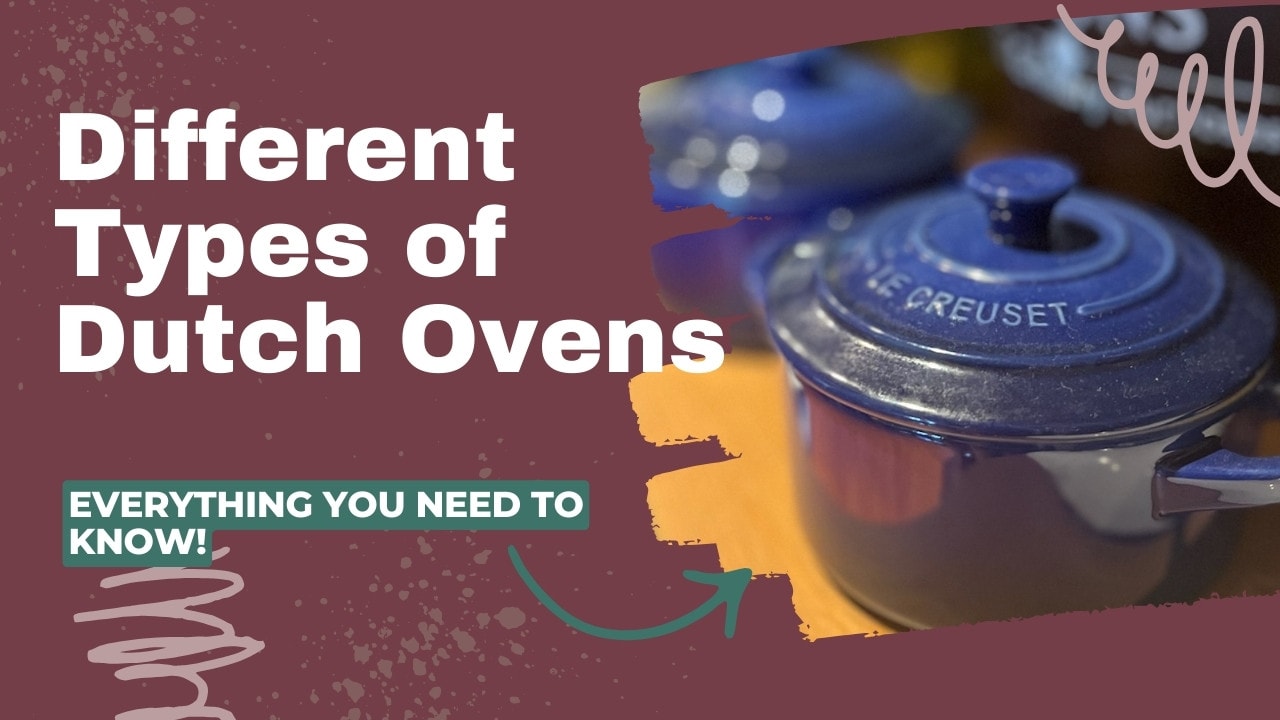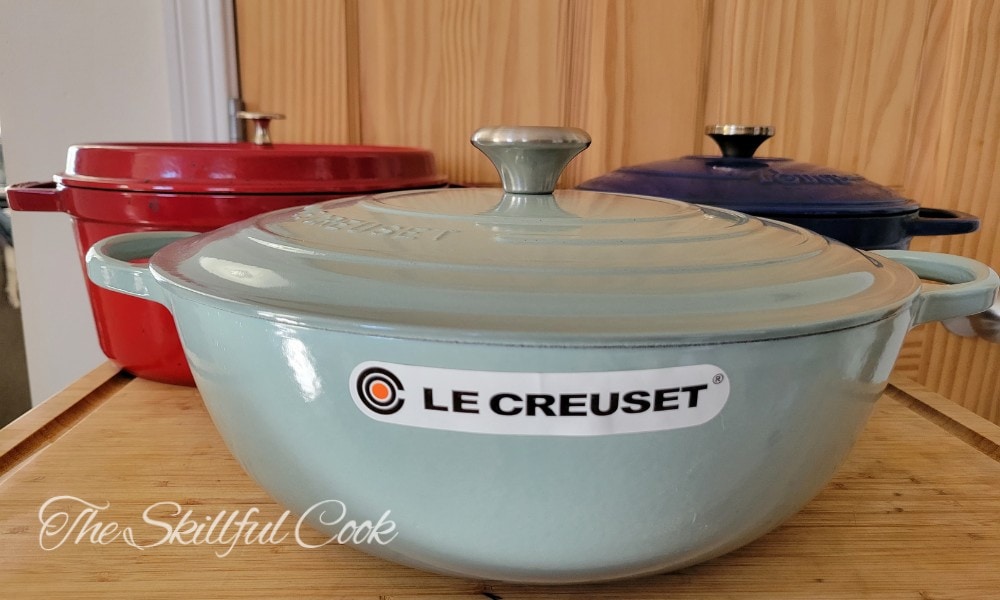I don’t think I could function without a Dutch oven! They are beautiful and versatile pots – but different kinds serve different purposes.
What material should it be made of? What size? What shape? What about lid types and prices?
In this article, I am going to go through all the types of Dutch ovens so you can pick the perfect one to suit your needs.
What are the Different Types of Dutch Ovens?
The main differences between Dutch ovens relate to the material, size, and shape. Dutch ovens are made from various materials, with the most popular being iron. Shapes include round, oval, or square. Capacities can range from a teeny-tiny 8oz cocotte to huge camp ovens that hold 10 quarts or more.
Other than the materials, you need to consider the appearance, price, lid types, appearance, and what you’re using it for.
Materials
The first decision you need to make when buying a Dutch oven is the material. Cast iron and enamel cast iron are by far the most popular options for Dutch ovens. But there are many other options in other materials that I’ll introduce to you in a minute.
Cast Iron
Cast iron is the original Dutch oven material because of its incredible heat retention. The material heats slowly but retains that even heat for long periods. The weight means the lid creates a firm seal to trap moisture. This makes it ideal for baking bread.
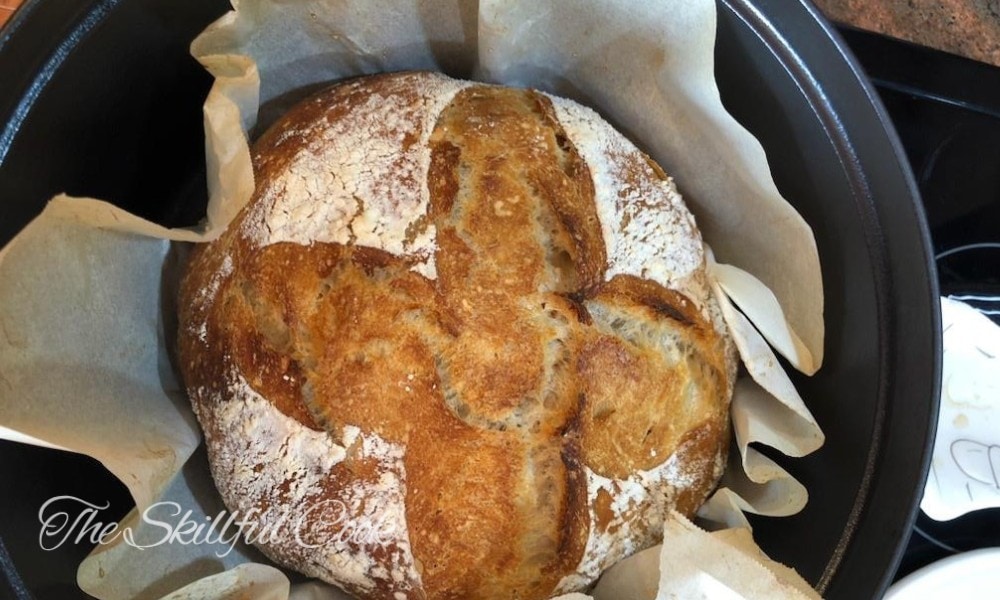
While this metal is affordable, it does have its downsides. It requires seasoning, and it is reactive to acidic foods like tomatoes or wine.
Enamel Cast Iron
Enamel cast iron is simply cast iron coated in two or three layers of porcelain enamel. This means that you can harness all the heat retention powers of cast iron without some of the drawbacks. The shiny surface doesn’t require seasoning, and it’s not reactive to acidic foods.
Compared to raw cast iron, enamel cast iron is very expensive, but it will last you a lifetime. However, it is only oven-safe to 400-500°F, depending on the brand.
Ceramic
Ceramic or stoneware is another material that is well suited to Dutch ovens. These have great heat retention, and they are significantly lighter than iron. These vessels are perfect for stews, casseroles, and bread baking.
Unfortunately, ceramic Dutch ovens are very expensive and harder to find. They are also prone to thermal shock and breaking if mishandled.
Stainless Steel
I love stainless steel for most cookware – but for me, Dutch ovens aren’t where this material shines.
Stainless steel is light and easy to clean and maintain compared to cast iron. But this metal has poor heat retention, so it’s not ideal for slow cooking effectively. The lids are also much lighter, so they don’t achieve that seal you need for steam creation.
Nonstick
Finding a nonstick Dutch oven is a tough job for a lot of reasons. Most nonstick coatings degrade at high temperatures in the oven, so stove-to-oven cooking is not an option.
Saying that, this Caraway Nonstick Dutch Oven is an option that is oven-safe up to 550°F. But I wouldn’t go with this choice as the lifespan is only 3-5 years in comparison to the lifetime that cast iron provides.
Shape and Size
Dutch ovens come in a variety of shapes and sizes that are suited for different uses. Your choices are round, oval, and square. You can slow-cook soups, stews, and casseroles in all these shapes, but there are particular things they are suited for. Round Dutch ovens are great for baking bread shaped into a boule and for small roasts. Oval Dutch ovens fit bread shaped into batards and large roasts like a shoulder.
Here is a quick breakdown of the uses for each capacity:
| Dutch Oven Size | Use |
|---|---|
| 1-qt | Sides, dessert, sauces |
| 2-qt | Heat sides, dessert |
| 3-qt | 1-2 person meals |
| 4.5-qt | 1-3 person meals |
| 5-qt | 4 person meal, bread baking |
| 6-qt | 6 person meals, bread baking |
| 7-qt | 8 person meal |
| 9-qt | 10 person meal, large roasts |
Other Features
Size and shape are your main decisions to make when buying a Dutch oven, but there are a few key items to consider. These may seem small, but they can make a significant difference to the usefulness of your pot.
Lids
The lids are a key factor when considering a Dutch oven. A good Dutch oven will have a tight-fitting lid that traps all the moisture and returns it to the dish. A heavy lid is ideal because this will ensure a tighter seal.
Some Dutch ovens have flat lids and others have domed lids. Flat lids are useful because they keep the steam closer to the food that’s cooking. You can also pile coals on a flat lid if you are using it in a campfire.
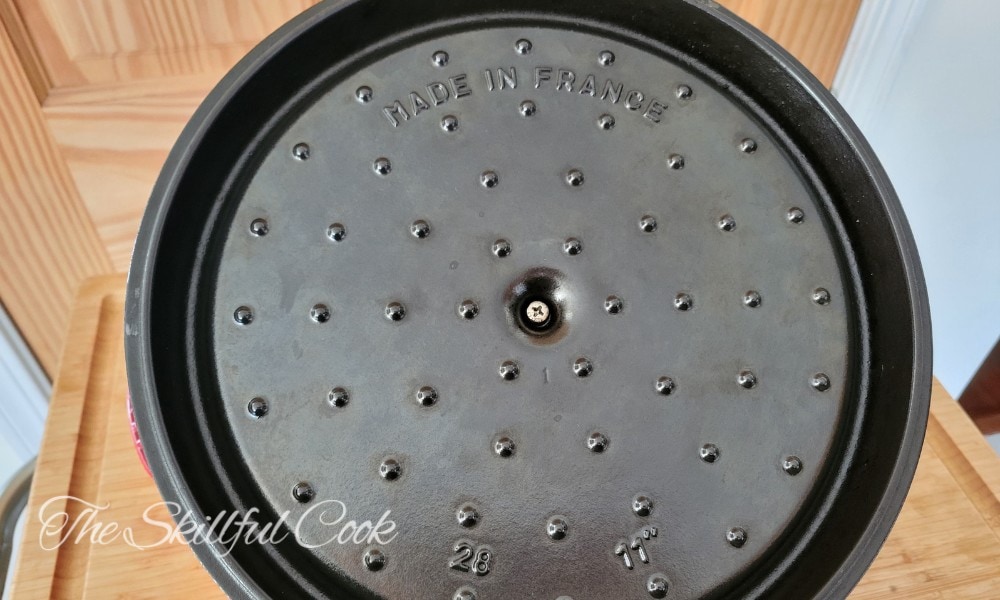
Some Dutch ovens, like those made by Staub, have “self-basting” bumps on the inside of the lid that encourage steam to drip back down into the pot. Pots with these lids lose less moisture during cooking, which may be a good or bad thing, depending on what you’re making.
If the lid is a different material than the oven itself, you need to check its heat tolerance before placing it in the oven. The same goes for the knobs on the lids.
Versatility
Most Dutch ovens are a significant investment, so versatility is very important to get your money’s worth. I recommend choosing one that is compatible with all cooktops that can go seamlessly from stove to oven. You should also consider which dishes you make often so you can choose a Dutch oven that can cover all these uses.
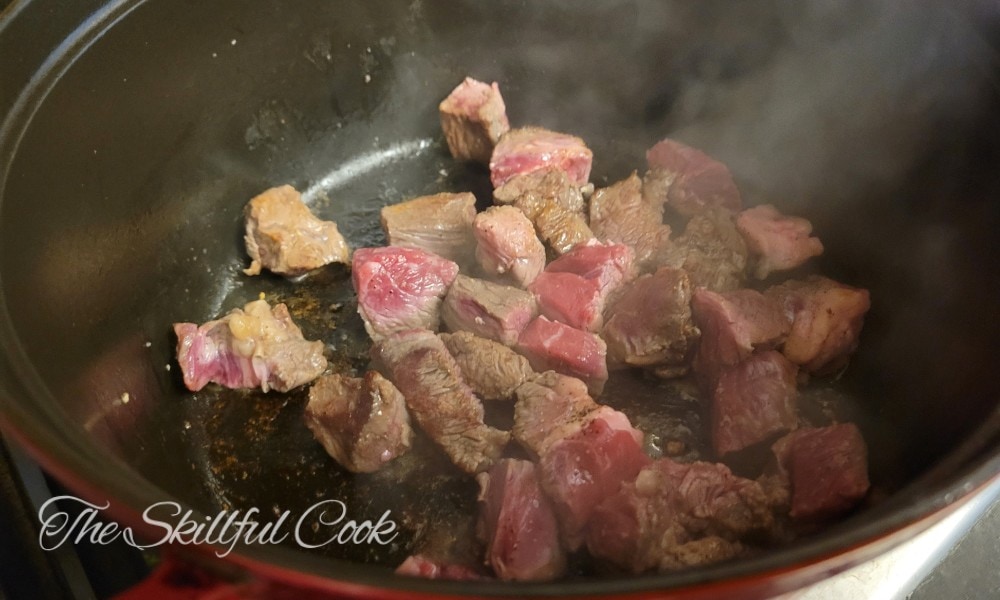
I prefer to go for a larger Dutch oven like a 5-qt, even for smaller households, because it’s more versatile. If it means you make slightly larger dishes, you can always freeze the leftovers for meal prep.
Appearance
One of the major selling points of Dutch ovens is how visually appealing they are. The raw cast iron and stainless steel options are very plain to look at, and they’ll probably live in the cupboard between uses. But if you go with an enamel cast iron Dutch oven, you get to choose a beautiful colorway.
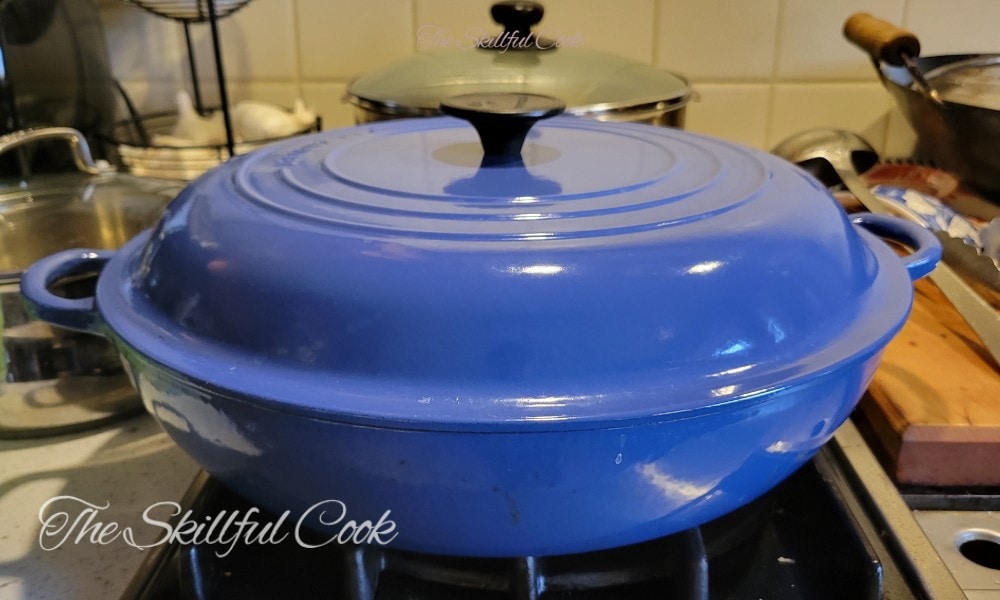
I store my enamel cast iron on display in my kitchen to enhance the interior decor.
Price
Fortunately, Dutch ovens come in a wide variety of prices. Raw cast iron is the cheapest option, yet it has the longest lifespan. But if you want something more versatile, like enamel cast iron, it will cost you a pretty penny. Consider your Dutch oven an investment piece because if you buy a great one now, you’ll never have to replace it.
What’s the Difference Between a Dutch Oven and a Double Dutch Oven?
Double Dutch ovens take the versatility of a regular Dutch oven and, as the name suggests, double it. These Dutch ovens have thicker lids that are flat with curved sides that, when turned upside down, doubles as a frying pan. This also provides extra space inside for larger roasts.
Conclusion: What’s the Best Type of Dutch Oven?
Overall, I value a Dutch oven that is multi-use and long-lasting, which is why I recommend a 5-qt enameled cast iron Dutch oven. But there are so many types of Dutch ovens on the market that you can choose the perfect one to fit your needs.
If you have any more questions about Dutch ovens, drop them below, and I’d be happy to answer them.

